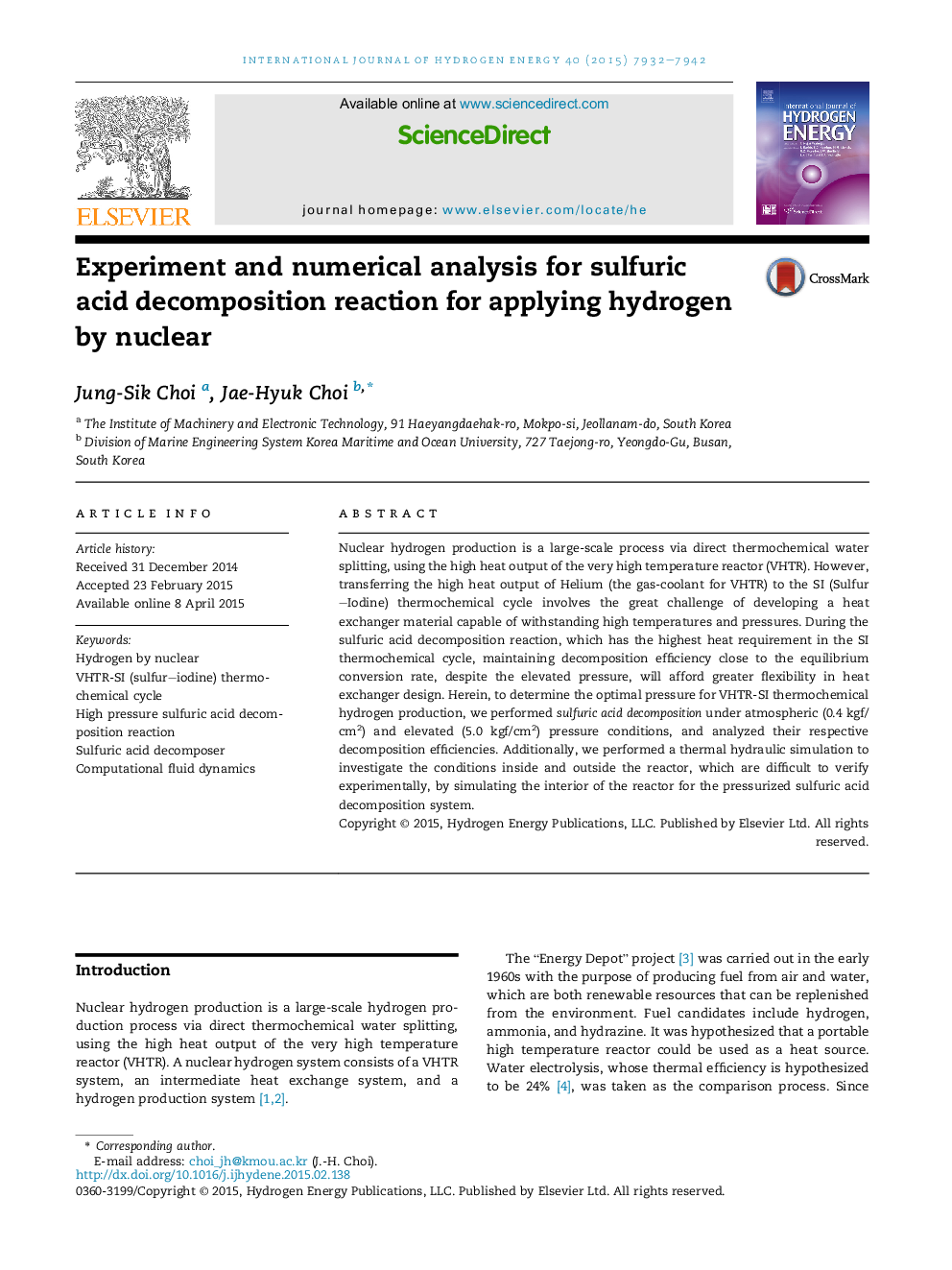| Article ID | Journal | Published Year | Pages | File Type |
|---|---|---|---|---|
| 1270790 | International Journal of Hydrogen Energy | 2015 | 11 Pages |
Nuclear hydrogen production is a large-scale process via direct thermochemical water splitting, using the high heat output of the very high temperature reactor (VHTR). However, transferring the high heat output of Helium (the gas-coolant for VHTR) to the SI (Sulfur–Iodine) thermochemical cycle involves the great challenge of developing a heat exchanger material capable of withstanding high temperatures and pressures. During the sulfuric acid decomposition reaction, which has the highest heat requirement in the SI thermochemical cycle, maintaining decomposition efficiency close to the equilibrium conversion rate, despite the elevated pressure, will afford greater flexibility in heat exchanger design. Herein, to determine the optimal pressure for VHTR-SI thermochemical hydrogen production, we performed sulfuric acid decomposition under atmospheric (0.4 kgf/cm2) and elevated (5.0 kgf/cm2) pressure conditions, and analyzed their respective decomposition efficiencies. Additionally, we performed a thermal hydraulic simulation to investigate the conditions inside and outside the reactor, which are difficult to verify experimentally, by simulating the interior of the reactor for the pressurized sulfuric acid decomposition system.
